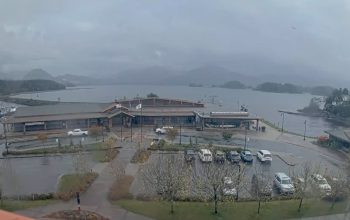Webcams Near Baton Rouge
Baton Rouge, Louisiana: A City of History and Economic Power
Baton Rouge, Louisiana, is rich in history and culture. As the state capital, it serves as the political hub of Louisiana. Located on the Mississippi River, it also plays a key role in the state’s economy. Over the years, Baton Rouge has grown into a vibrant city, blending its historical roots with modern industry and cultural landmarks.
The City’s History
Baton Rouge’s history dates back to 1699 when Pierre Le Moyne, Sieur d’Iberville, a French explorer, first spotted the area. He gave the city it’s name meaning “red stick,” after the red boundary markers used by Native Americans. Settlers started arriving in 1721, and the city was officially incorporated in 1817.
The city became Louisiana’s state capital in 1849. Its location on the Mississippi River made it a crucial trading hub. Steamboat traffic boosted its economy, making it a thriving town. However, during the Civil War, Union forces occupied the city, which caused economic disruption.
In the early 1900s, the area experienced rapid growth. The discovery of oil and natural gas in the area led to the rise of the petrochemical industry, which remains a key part of its economy today. This industrial boom helped transform the city into a major economic center.
Life Today
Baton Rouge is now a busy city that mixes old and new. Its location on the Mississippi River gives it access to major trade routes, helping it grow into a transportation hub. The city’s economy has diversified over the years. While the petrochemical industry remains strong, new sectors such as technology, film, and education have emerged.
Louisiana State University (LSU) plays a major role in Baton Rouge’s growth. The university attracts students, researchers, and professionals from across the country. The city is also home to a growing healthcare and medical research sector, providing jobs and contributing to economic growth.
Economy and Industry
Baton Rouge’s economy is deeply rooted in industry. The city hosts the fourth-largest oil refinery in the United States, making it a major player in the energy market. Along with oil refining, it is known for its natural gas processing and other petrochemical activities.
The city’s port is another key economic driver. As one of the largest deep-water ports in the U.S., it connects Baton Rouge to global markets. The port handles large amounts of cargo, especially oil and natural gas, and contributes to the city’s economic importance.
In recent years, higher education, healthcare, and technology have also become significant contributors to Baton Rouge’s economy. The presence of Louisiana State University has made the city a center for research and innovation. Meanwhile, the healthcare sector, which includes hospitals and medical research facilities, continues to grow and diversify the economy.
Key Economic Sectors
| Industry | Focus Areas |
|---|---|
| Petrochemical | Oil refining, natural gas, chemical production |
| Higher Education | Louisiana State University, Southern University |
| Transportation | Port of Baton Rouge, rail, river transport |
| Healthcare | Medical research, hospitals, healthcare services |
| Technology and Film | Emerging technology firms, film production industries |
Cultural Landmarks
Baton Rouge is home to many historical and cultural landmarks. The Louisiana State Capitol, standing at 450 feet, is the tallest state capitol building in the United States. It is not only a political center but also a major architectural landmark.
The Old Governor’s Mansion, built in 1930, is another popular site. Once home to Louisiana’s governors, it is now a museum showcasing the state’s political history. Visitors can explore the mansion and see exhibits on Louisiana’s rich political past.
The Magnolia Cemetery is another important historical site. Dating back to the 1850s, it contains the graves of many Civil War soldiers and provides a glimpse into the city’s past.
Other significant landmarks include the Longwood Plantation, which represents Baton Rouge’s antebellum history, and the Lincoln Theater, a cultural monument that played a key role during the Civil Rights Movement.
Demographics
Baton Rouge is a diverse and culturally rich city. According to the 2020 U.S. Census, the city had a population of 227,420, while the larger metropolitan area had 870,569 residents. Baton Rouge’s population is growing, with many people moving to suburban areas surrounding the city.
Population Breakdown (2020 Census)
| Population | Number |
|---|---|
| Baton Rouge City | 227,420 |
| Baton Rouge Metro Area | 870,569 |
The city’s racial makeup reflects its diversity. African Americans make up the majority of the population, followed by White residents. Baton Rouge is also home to Asian Americans, Hispanic communities, and other racial groups, creating a culturally vibrant environment.
Racial Demographics (2020 Census)
| Race | Percentage |
|---|---|
| African American | 53.5% |
| White | 38.1% |
| Asian | 3.7% |
| Other Races | 4.7% |
Climate
Baton Rouge has a humid subtropical climate, typical of cities in the Gulf Coast region. Summers are hot and humid, while winters are generally mild. The city’s location near the Gulf of Mexico brings moisture, which results in frequent rain and thunderstorms.
Seasonal Overview
- Summer: Summers are hot, with temperatures often exceeding 90°F (32°C). Humidity is high, making it feel even warmer.
- Winter: Winters are mild, with temperatures ranging between 40°F and 60°F (4°C – 15°C). Snow is extremely rare.
- Rainfall: Baton Rouge gets regular rainfall, particularly in summer and early fall.
While Baton Rouge is not as vulnerable to hurricanes as some coastal cities, its proximity to the Gulf makes it susceptible to tropical storms and hurricanes during hurricane season, which runs from June through November.
Geography
Baton Rouge sits in southeastern-central Louisiana on the Mississippi River. The city’s location on the first natural bluffs north of the Mississippi River Delta makes it naturally protected from river flooding. Its strategic position as a river city gives it an advantage in trade and transportation, connecting Baton Rouge to other major cities, including New Orleans, Houston, and Jackson.
The city covers an area of 79.15 square miles, with 2.2 square miles consisting of water bodies. The Mississippi River serves as the city’s western boundary, helping Baton Rouge maintain its role as a major transportation hub for goods and services.
Louisiana’s Capitol City
Baton Rouge is a city steeped in history and culture, with a diverse economy that continues to grow. Its strategic location on the Mississippi River, combined with a strong petrochemical industry, education sector, and expanding technology and healthcare industries, makes Baton Rouge an important part of Louisiana’s future.
With its vibrant population, significant landmarks, and a robust economy, Baton Rouge balances the past with the future, cementing its role as one of Louisiana’s most important cities.


